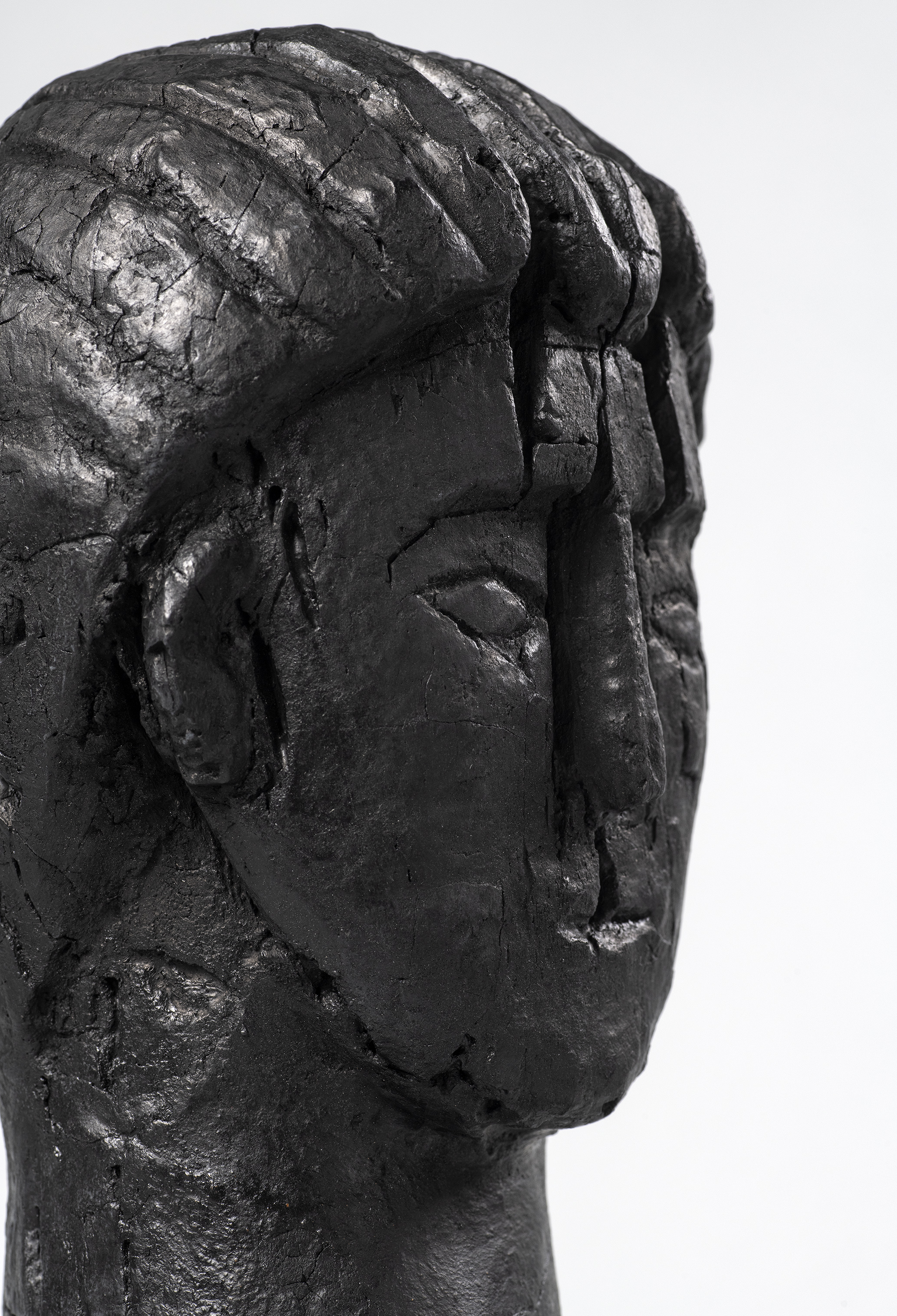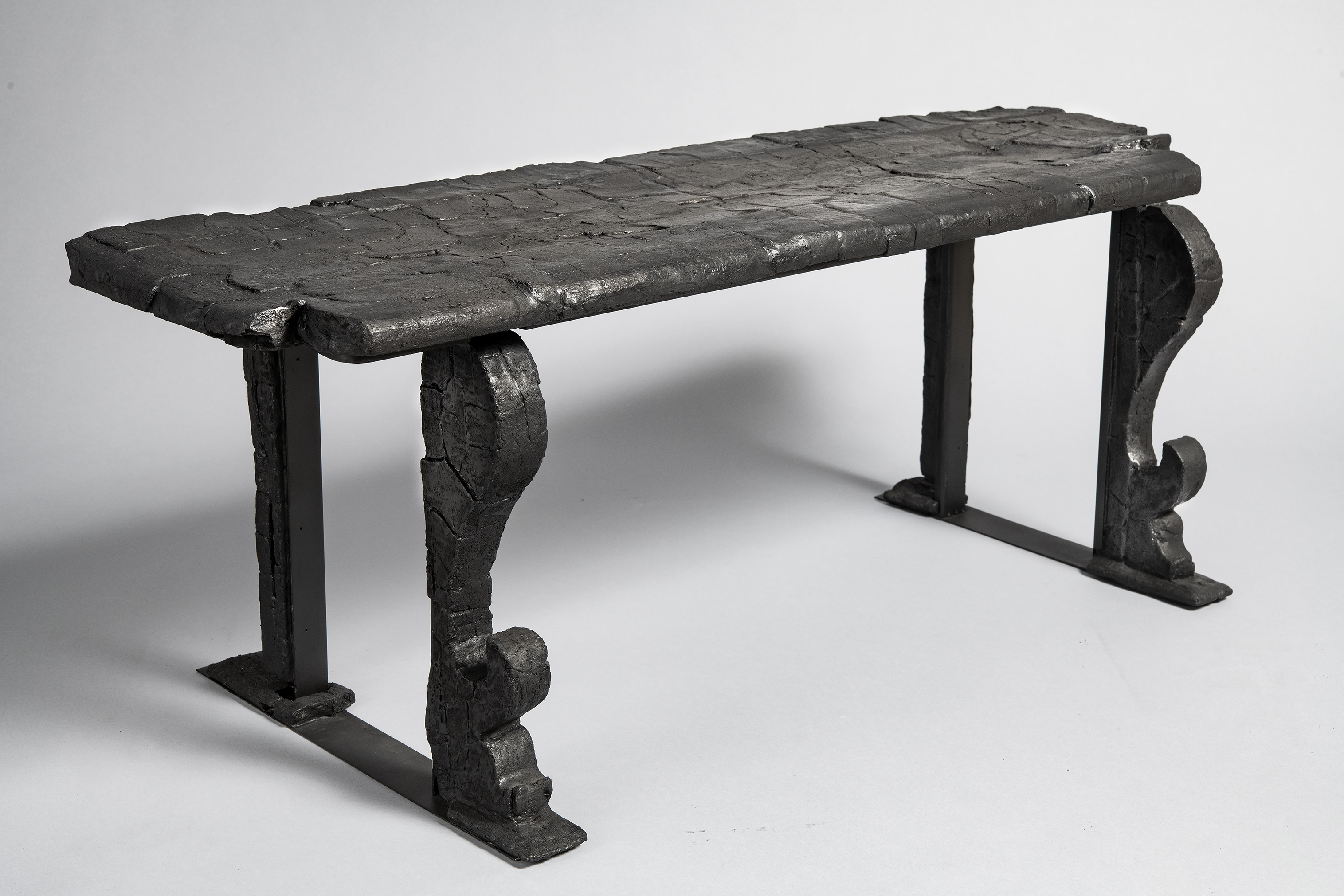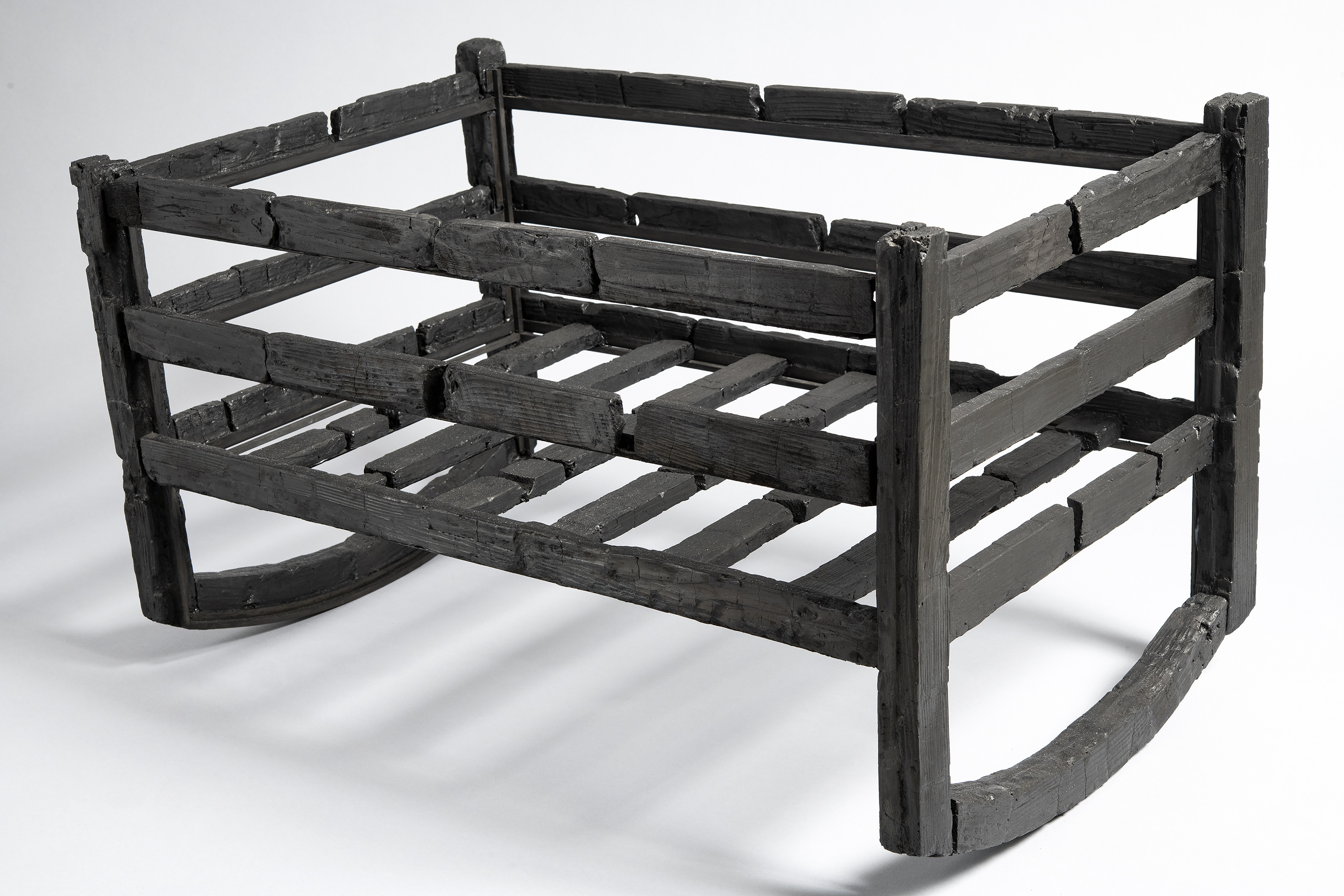Bronze furniture sconce with bust of Attis, Palaestra, Insula Orientalis II, detail | Photo: © Luigi Spina
And so, where one would have expected to find ash or imprints of wooden elements, as witnessed in Pompeii, in Herculaneum the wood is not burned, but has kept its original shape and appearance, paying an acceptable tribute to the eruption: carbonization.
An enormous number of objects, including doors, architraves, windows, a loom or a large press perhaps connected to the production of perfumes, has been returned over the years by history, while boats and numerous artifacts related to maritime activities – such as oars, rudders, winches – came to today’s witnesses from the ancient shoreline of the city. Objects such as the cradle of the House of Granianus, found together with the slender remains of the infant who rested there, a bed with inlaid backs, a wardrobe with a lararium in the shape of a small temple, together with benches, the stool of the House of the Two Atria, with a motif star made with different types of wood, and still small tables, a small herm, a waxed tablet, used as a writing support, and even a coin purse with silver inlay decoration, are now shown, for the first time all together, in the scope of the exhibition Matter. The wood that did not burn in Herculaneumat the Palace of Portici from 14 December to 13 October 2023.

Small herm, uncertain provenance, Casa a Graticcio, detail of the face | Photo: © Luigi Spina
The itinerary, curated by Francesco Sirano and Stefania Siano, unwinds on the main floor of the Royal Palace of Portici, a few meters from the rooms where, starting from 1738, the Herculanense Museum was set up, the first nucleus of what is today the National Archaeological Museum of Naples.
“One is amazed – writes Sirano – by accessing the deposits of the Park and discovering dozens of pieces of furniture of various shapes and decorations, artifacts that allow one to project oneself ideally into the houses of the ancient Herculaneans to discover places made familiar by the presence of beds, wardrobes, tables, stools , escaped the fury of the volcano and recovered from the patient work of archaeologists and restorers who, from Amedeo Maiuri onwards, have taken care of the city”.
The careful restoration work has in fact allowed the recovery of many objects which, although appearing, in most cases as charred wood, still retain their original shape and the refinement of the carved decorations.
Produced by the Herculaneum Archaeological Park with the support of the Packard Humanities Institute, the exhibition will allow visitors to appreciate the preserved wood, which escaped the catastrophe that hit the Vesuvius area, as well as immerse themselves in the habits of the ancients. The over 120 objects from Herculaneum will show how vital wood was for carrying out every activity. Of great interest is what was recovered from the roof of the Casa del Rilievo di Telefo, which fell on the Ancient Beach. Conservation in a damp environment and timely consolidation intervention made it possible to recover part of the roof of a reception room with a false ceiling with carved and painted wooden lacunars, evidence of sophisticated craftsmanship, as well as the high social status of the owners of the house.

Bench with carved front legs, Decumanus Maximus | Photo: © Luigi Spina
Continuing along the exhibition itinerary, the visitor ideally reaches the sea. From the excavations carried out between the 80s and 90s of the last century, the seafront of the city re-emerged, unique in Roman archeology, like the skeletons of those who tried to escape the eruption by sea and the remains of boats and of objects related to seafaring and fishing, extraordinarily preserved. One of these boats, once used for fishing, discovered in the 1990s in the area near the thermal complex of the Insula Northwest of the city, is on display and attests how, at the time of the eruption, the thermal baths were used as a storage place for boats and for storing equipment related to maritime activities.

Cradle with uprights and sleepers, House of M. Pilius Primigenius Granianus | Photo: © Luigi Spina

